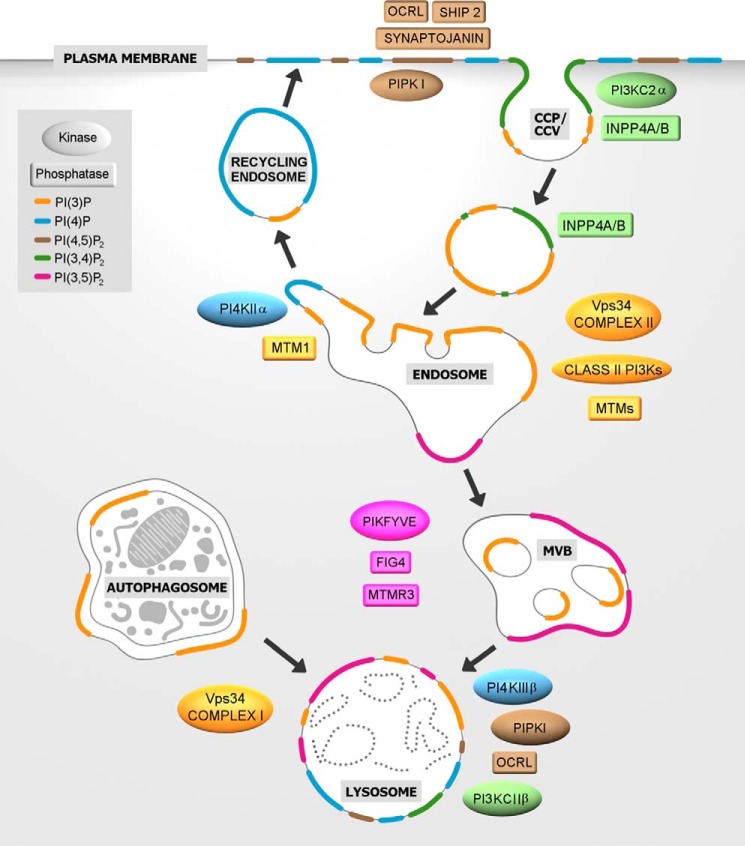Figure 2.
PI conversion in CME and in the endolysosomal system. Clathrin-mediated endocytosis requires plasma membrane PI(4,5)P2, which is a substrate for the PI 5-phosphatases OCRL, synaptojanin, and SHIP1/2. Class II PI3Kα generates a plasma membrane pool of PI(3,4)P2 necessary for CCP maturation and formation of free clathrin-coated vesicles (CCV). PI(3)P, an essential feature of early endosomes, is generated primarily by the class III PI3K Vps34 complex II with a possible contribution of class II PI3Ks (encircled by dashed line), either by direct PI(3)P synthesis or indirectly via PI(3,4)P2 hydrolysis by the PI 4-phosphatases INPP4A/B. Endosomal recycling to the cell surface requires PI(3)P hydrolysis by myotubularin phosphatases (MTMs) such as MTM1 and the concomitant generation of PI(4)P by PI4KIIα to enable exocytosis. As endosomes mature into late endosomes/MVBs, the PI(3)P 5-kinase PIKFYVE converts PI(3)P into PI(3,5)P2. PI(3,5)P2 turnover at MVBs and/or lysosomes is mediated by MTMs together with the PI(3,5)P2 5-phosphatase Fig4. Lysosomal membranes contain several PIs such as PI(3)P, PI(4)P, and PI(4,5)P2. PI(3)P can be produced by class III PI3K/Vps34 directly at the lysosome or is obtained by fusion with autophagosomes, where PI(3)P is produced by VPS34 complex I. PI(4)P is generated by PI4KIIIβ, and PI(4,5)P2 is hydrolyzed by OCRL. PI(4)P can be converted to PI(3,4)P2 by the class II PI3KC2β.

